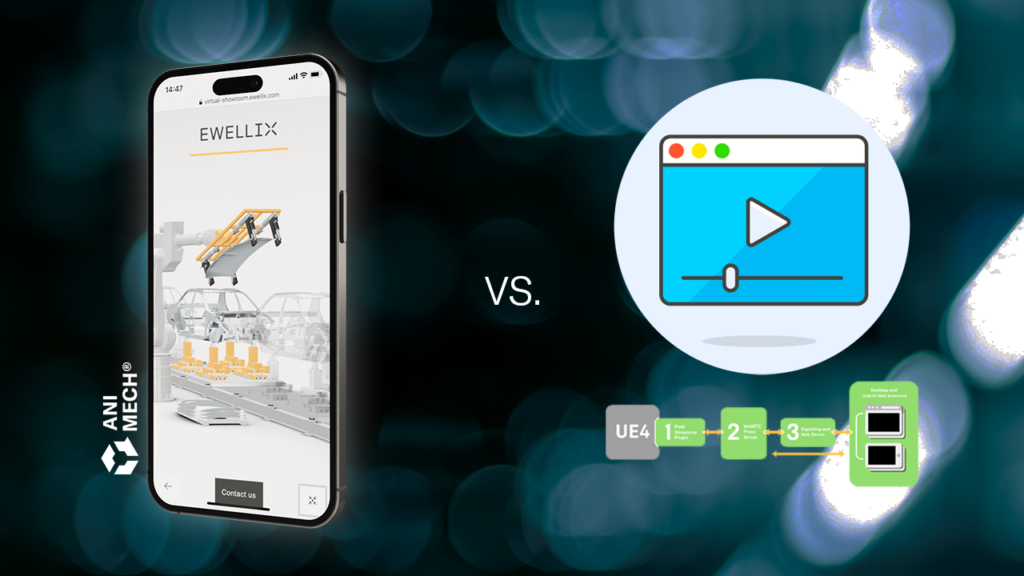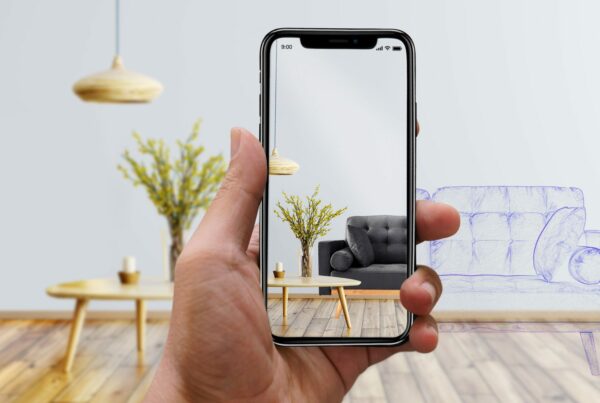Real-time 3D content has become a popular way to offer users high quality and attractive experiences. Two popular options for reaching audiences with 3D content are Pixel Streaming and Native Web applications running on a regular website. In this article, we will compare and contrast these two options to determine which provides the best user experience.
Comparison between Pixel Streaming and Native Web applications for 3D content
Real-time 3D content has become a popular way to offer users high quality and attractive experiences. Two popular options for reaching audiences with 3D content are Pixel Streaming and Native Web applications running on a regular website. In this article, we will compare and contrast these two options to determine which provides the best user experience.
Pixel Streaming is a technology developed by Epic Games that allows users to stream 3D content from a server to the user’s browser. This technology is based on the Unreal Engine and allows users to stream high-quality 3D content without the need for powerful hardware. The technology works by rendering the 3D content on a server and then streaming the images to the user’s device in real time, often as a compressed video.
Native Web refers to web-based applications developed using programming languages, such as JS, Objective-C or Swift. These applications can be accessed via a web browser or downloaded as stand-alone applications. Native Web provides a platform-specific user interface and allows developers to take advantage of platform-specific features.

Which option provides the best user experience for 3D content?
Pixel Streaming
Benefits: One of the main benefits of Pixel Streaming is that it provides high-quality 3D content without the need for powerful hardware and expensive graphics cards. This means that users can enjoy immersive experiences without having to buy expensive hardware. In addition, Pixel Streaming enables users to access 3D content on various devices, including smartphones, tablets and desktops.
Cons: One of the disadvantages of Pixel Streaming is that it requires a reliable internet connection. If the user’s internet connection is slow or unstable, the streaming quality may degrade and result in a poor user experience. Latency is the delay between the user’s input and the system’s response. When streaming 3D content, latency can result in delayed responses or slow rendering, reducing the immersiveness and responsiveness of the experience.
When it comes to streaming 3D content, an important factor to consider is the pricing model of the streaming solution. Most streaming solutions are based on a ‘per user’ pricing model, which means that the cost of the service increases with the number of users accessing the content. This can quickly become a factor that users need to take into account when choosing a streaming solution.
If a user expects high traffic volume for their 3D content, they need to be aware of the potential costs of the streaming solution. The cost of streaming per user can easily add up, especially if the user expects a large number of users to access the content simultaneously. This can result in high costs that may not be sustainable in the long term. Costs can vary depending on the streaming solution, and users must carefully evaluate each solution to determine which one provides the best value for their investment.
Native web
Native web provides a platform-specific user interface that can lead to a more seamless user experience. The cost of hosting a website is not nearly as high as paying for high-volume streaming.
Native technologies for real-time 3D on the web have come a long way in recent years, with significant advances in both the quality and realism of 3D graphics. This progress has been made possible by improvements in hardware, software and development tools, as well as the increasing demand for immersive and interactive web experiences.
Real-time 3D technology has seen a noticeable evolution in its ability to render high-resolution and realistic graphics while running smoothly on most modern devices. This has made embedded web a great option for those who want to offer premium quality 3D experiences to a large number of users at affordable prices. In addition, embedded web applications can take advantage of platform-specific features, such as the device’s camera or GPS, to improve the user experience.
Finally, the choice between pixel streaming and native web ultimately depends on the specific needs of the user. If the user values high-quality 3D content of complex environments or high-performance complex objects like cars and accessibility to fewer users, pixel streaming may be the option. But if the user values a seamless user experience, high traffic volume at lower cost, and the ability to take advantage of platform-specific features, native web may be the better option. Both technologies provide unique benefits and can offer a high quality user experience when used correctly.






